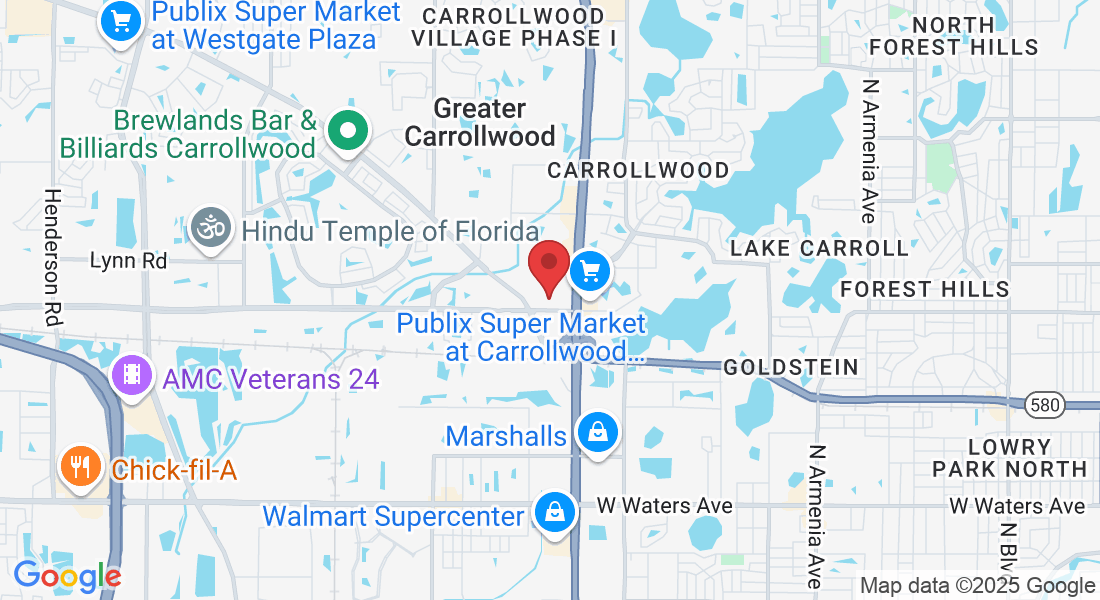CALL NOW & SCHEDULE TODAY
Our Blog
Here you will find free financial tips and actionable items that can help you make better financial decisions, and get you on the path to financial independence. Here's to your success!

6 Steps to Building Your Financial House for Long-Term Stability: A Comprehensive Guide
Introduction
Did you know that 78% of Americans live paycheck to paycheck, and 64% would struggle to come up with $1,000 for an emergency? These alarming statistics show just how many families are living in financial houses built on shaky ground.
Imagine walking through your dream home. Every brick, beam, and shingle serves a purpose, working together to create a safe, comfortable space for you and your loved ones. Your financial future works the same way—it needs to be built methodically, with each component carefully planned and positioned. While most people dream of financial independence, turning that dream into reality requires more than just wishful thinking. It demands a structured approach, much like constructing a house that can weather any storm.
In this comprehensive guide, we'll explore the six essential steps to building your financial house—a structure that will protect your wealth, support your goals, and provide the security you need for generations to come.
Step 1: Build a Solid Foundation—Income Protection

The Million-Dollar Question
What would happen to your family if your income disappeared tomorrow? For the Johnson family, this question became a harsh reality when Tom, a 42-year-old father of two, passed away unexpectedly. Because he had followed proper financial planning advice and secured adequate term life insurance, his family maintained their standard of living and his children's college dreams remained intact. Unfortunately, his colleague Mike's family faced a very different situation when they discovered his employer-provided insurance wouldn't cover even a year of expenses.
Understanding Your Role as a Financial Provider
Think of yourself as your family's personal "money machine"—a powerful engine that generates the resources needed for everything from daily necessities to long-term dreams. While we often focus on being parents, partners, and caregivers, our role as financial providers is equally crucial. Just like a reliable machine that produces valuable output, you consistently generate income that keeps your family's life running smoothly.
Let's put this in perspective: if you earn $50,000 annually, you're not just bringing home a paycheck—you're a sophisticated machine capable of generating $1.5 million over a 30-year career, not counting raises or promotions. That's an impressive amount of value! Now imagine if this machine suddenly stopped working. The impact would be devastating for those who depend on it.
Your role as a provider extends beyond your lifetime—it's a commitment that shouldn't end even if you're no longer here. Just as you work hard to provide for your family today, proper planning ensures you can continue providing for them tomorrow. This is where life insurance becomes not just an option, but a fundamental expression of your dedication to your family's well-being. It's your way of saying "I'll take care of you" even when you can't be there in person.
The Smart Approach to Life Insurance
Term life insurance is the cornerstone of income protection. Here's why it's the most effective choice:
Provides maximum coverage at the lowest cost
Simple, straightforward protection without unnecessary complications
Allows you to invest the money you save on premiums for better returns elsewhere
Why Avoid Cash Value Insurance?
Cash value insurance products (whole life, variable life, universal life, indexed universal life, etc.) are often marketed as "life insurance plus savings." However, they come with significant drawbacks:
Much higher premiums for the same coverage amount
Low returns on the savings component
Extremely high fees that eat into your wealth
Complicated terms and conditions that can be difficult to understand
The Danger of Relying on Employer-Provided Insurance
While workplace life insurance is a nice benefit, depending solely on it puts your family at serious risk:
Coverage is typically insufficient for your family's needs
Insurance ends if you change jobs or lose employment
You risk becoming uninsurable due to health issues before securing private coverage
Your family's financial security shouldn't depend on your employment status
Expert Implementation Tips
Secure private term life insurance independent of your employer
Get coverage while you're young and healthy to lock in lower rates
Review and update your coverage as your income and family situation change
Choose a reputable insurance company with strong financial ratings
Step 2: Create the Frame—Budgeting

Where Does All Your Money Go?
Sarah Martinez used to wonder this same question every month. Despite earning a good salary, she felt like money slipped through her fingers like water. That changed when she discovered zero-based budgeting. "Within three months, I found an extra $600 I didn't know I had," she shares. "It was all about giving every dollar a purpose."
Why Most People Struggle Financially
Before diving into budgeting strategies, it's important to understand why many people face financial difficulties:
Lack of Financial Education
Most schools don't teach personal finance
Many learn money management through trial and error
Financial mistakes can take years to overcome
Insufficient Financial Planning
No clear roadmap for achieving financial goals
Reactive rather than proactive approach to money
Failure to prepare for unexpected expenses
Not Seeking Professional Guidance
Trying to figure everything out alone
Missing out on expert insights and proven strategies
No accountability or structured plan for success
The Power of Zero-Based Budgeting
A zero-based budget gives every dollar a specific job, ensuring maximum control over your money. Here's how it works:
Income Allocation
List all sources of income
Assign every dollar to a specific category
Keep adjusting until income minus expenses equals zero
Essential Categories
Housing (mortgage/rent, utilities, maintenance)
Transportation
Food and groceries
Healthcare
Savings and investments
Debt payment
Emergency fund
Making Budgeting Work
Use Rocket Money for easy tracking and automation
Download our proven budget spreadsheet template
Review and adjust your budget monthly
Celebrate progress and learn from setbacks
Step 3: Add the Roof—Legal Documents
Who Will Protect Your Family When You Can't?
The Garcia family learned this lesson the hard way. When Maria's sister passed away without a will, what should have been a straightforward inheritance turned into a three-year legal battle that tore the family apart. "If only she had taken one day to put her wishes in writing," Maria reflects, "we could have avoided so much pain and preserved our relationships."
Essential Legal Documents
Will and Testament
Names guardians for minor children
Designates beneficiaries for assets
Specifies how you want your estate distributed
Prevents family conflicts and court interventions
Power of Attorney (POA)
Financial POA for managing money matters
Medical POA for healthcare decisions
Ensures your wishes are followed if you're incapacitated
Living Will/Advanced Directives
Specifies your healthcare preferences
Reduces burden on family during difficult times
Ensures your medical wishes are respected
Implementation Steps
Work with a qualified attorney
Review documents every 3-5 years
Update after major life changes
Keep documents secure but accessible
Share locations with trusted family members
Affordable Legal Protection
We have partnered with LegalShield to bring you all of these documents for a fraction of what it would cost going through a regular qualified attorney.
Step 4: Secure the First Floor—Emergency Fund

Could You Handle a $5,000 Emergency Tomorrow?
Just ask David Chen, who thought his savings could wait until his car's transmission failed unexpectedly. With no emergency fund, he was forced to put $3,500 on a high-interest credit card. "That 'emergency' ended up costing me over $5,000 with interest," he says. "Now I know why they call an emergency fund your financial first aid kit."
Building Your Emergency Fund
Start with a $1,000 Starter Fund
Quick protection against minor emergencies
Psychological win to build momentum
Foundation for larger savings goals
Build to 3-6 Months of Expenses
Calculate your essential monthly expenses
Include all basic living costs
Adjust based on job stability and family size
Where to Keep Your Emergency Fund
High-yield savings account
Separate from regular checking
Easily accessible without penalties
FDIC-insured institution
Common Emergency Fund Mistakes to Avoid
Keeping too much in low-interest accounts
Mixing emergency savings with regular savings
Using it for non-emergencies
Not replenishing after use
Step 5: Build the Second Floor—Debt Elimination
Is Debt Holding You Back from Your Dreams?
Meet Marcus Thompson, who faced $45,000 in credit card debt. "I felt like I was drowning," he recalls. Using the Debt Stacking Method, he became debt-free in just under three years. "The key was targeting those high-interest cards first—it saved me thousands in interest and kept me motivated when I saw the balances dropping faster."
The Debt Stacking Method
List all debts and their interest rates
Pay minimum on all debts
Focus extra payments on highest interest debt first
Roll payments to next highest-interest debt when one is paid
Build momentum while minimizing interest costs
Why Debt Stacking Works
Minimizes total interest paid
Accelerates debt payoff timeline
Creates systematic approach to debt elimination
Maintains motivation through clear progress
Debt Prevention Strategies
Live below your means
Use cash for purchases
Wait 24 hours before large purchases
Keep emergency fund funded
Follow your zero-based budget
Common Debt Traps to Avoid
Credit card reward schemes
Buy now, pay later offers
Zero percent financing deals
Consolidation loans without behavior change
Step 6: Finish with the Third Floor—Investing and Financial Independence

Are You an Owner or a Loaner?
Meet Sarah and Michael, two young professionals who just turned 25. Both earn similar salaries and have $200 to save each month. Sarah decides to become an owner by investing in carefully selected actively managed mutual funds. Michael, preferring to play it "safe," becomes a loaner by keeping his money in a high-yield savings account at his local bank.
Let's fast forward 40 years to see how their choices played out.
The Tale of Two Savers: Owner vs. Loaner
Sarah the Owner:
Invested $200 monthly in actively managed mutual funds, earning a 9% average annual return
After 40 years, her investment grew to approximately $798,000
Her money doubled roughly every 8 years (Rule of 72: 72 ÷ 9 = 8 years)
Michael the Loaner:
Saved $200 monthly in a high-yield savings account earning 2% interest
After 40 years, his savings grew to approximately $147,000
His money doubled every 36 years (Rule of 72: 72 ÷ 2 = 36 years)
The difference? A staggering $651,000. While Michael's bank used his money to invest and lend to others—earning high returns for themselves—they paid him just a small fraction of those profits. Sarah, on the other hand, became a partial owner in hundreds of successful companies, benefiting directly from their growth and profits.
The High Cost of Waiting
Imagine four individuals, each planning to invest $200 monthly until age 65, earning a 9% average annual return:
Emma starts at 25
Invests for 40 years
Total invested: $96,000
End result: $798,000
James starts at 35
Invests for 30 years
Total invested: $72,000
End result: $318,000
Lisa starts at 45
Invests for 20 years
Total invested: $48,000
End result: $118,000
Robert starts at 55
Invests for 10 years
Total invested: $24,000
End result: $37,000
The message is clear: every decade you wait to start investing can cost you hundreds of thousands in potential wealth.
Understanding the Rule of 72
The Rule of 72 is a simple way to estimate how long it takes your money to double. Just divide 72 by your rate of return:
At 9% (stock market average): 72 ÷ 9 = 8 years to double
At 2% (savings account): 72 ÷ 2 = 36 years to double
At 1% (typical checking account): 72 ÷ 1 = 72 years to double
This powerful rule shows why being an owner rather than a loaner is crucial for building wealth. While banks use your savings to invest and earn high returns, they pay you minimal interest, keeping most of the profits for themselves.
Investment Fundamentals
Start early to harness compound interest
Invest consistently regardless of market conditions
Diversify across different asset classes
Focus on long-term growth over short-term gains
Investment Vehicles to Consider
Employer retirement plans (401(k), 403(b))
Individual Retirement Accounts (IRA)
Health Savings Accounts (HSA)
Regular brokerage accounts
Building Wealth Through Consistency
Automate your investments
Increase contributions with raises
Reinvest dividends and gains
Stay invested during market downturns
Remember: The greatest risk to your financial future isn't the occasional market downturn—it's not being in the market at all. Every day you wait to become an owner instead of a loaner is a day of potential growth lost forever.
Conclusion
Building your financial house is a journey that requires patience, discipline, and proper guidance. Each step builds upon the previous one, creating a structure that becomes stronger and more valuable over time. Remember, your financial house is unique to you, but the fundamental principles of construction remain the same.
Ready to start building your financial house without having to guess if you're doing it right? Take the first step toward financial confidence by working with a professional who can guide you through each stage of construction. Your dream of financial independence is too important to leave to chance.
Schedule your free Free Financial Consultation: https://joesusana.me/a78398
Join our community of successful builders: https://joesusana.me/5467e0
Our mission at J&M Financial Services is simple: to empower families to achieve financial peace of mind. We achieve this by upholding values like integrity, trust, and an unwavering dedication to your financial success.
10008 N Dale Mabry Hwy
Ste 100-S
Tampa, FL 33618
888-681-7506
Copyright © 2025 J&M Financial Services - All Rights Reserved


